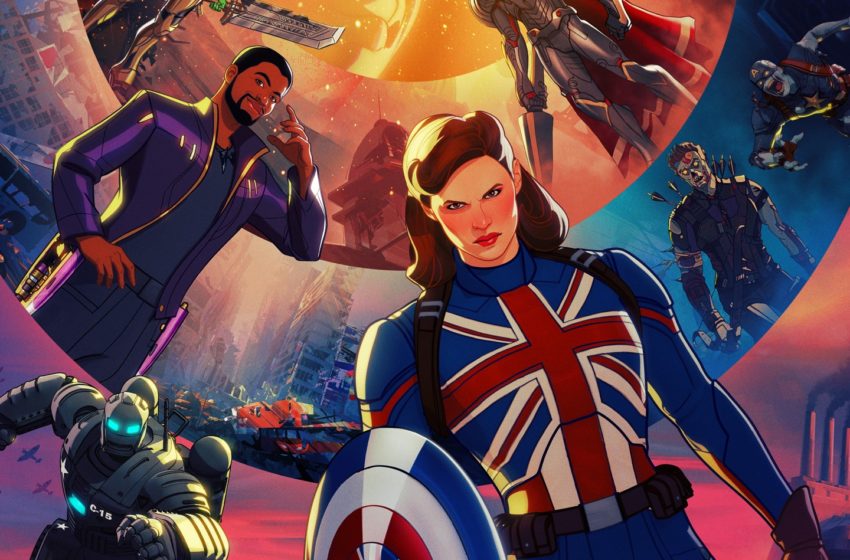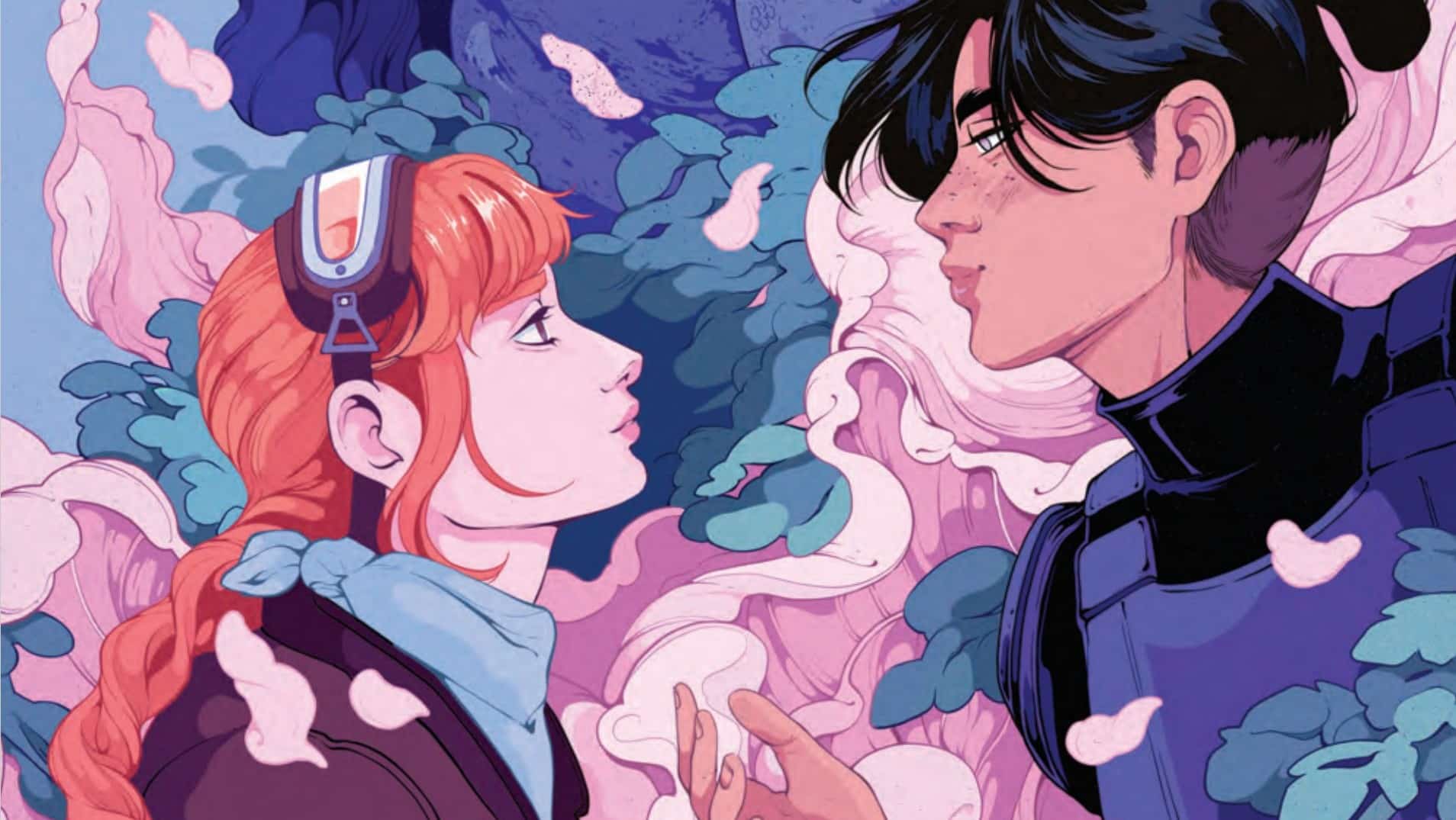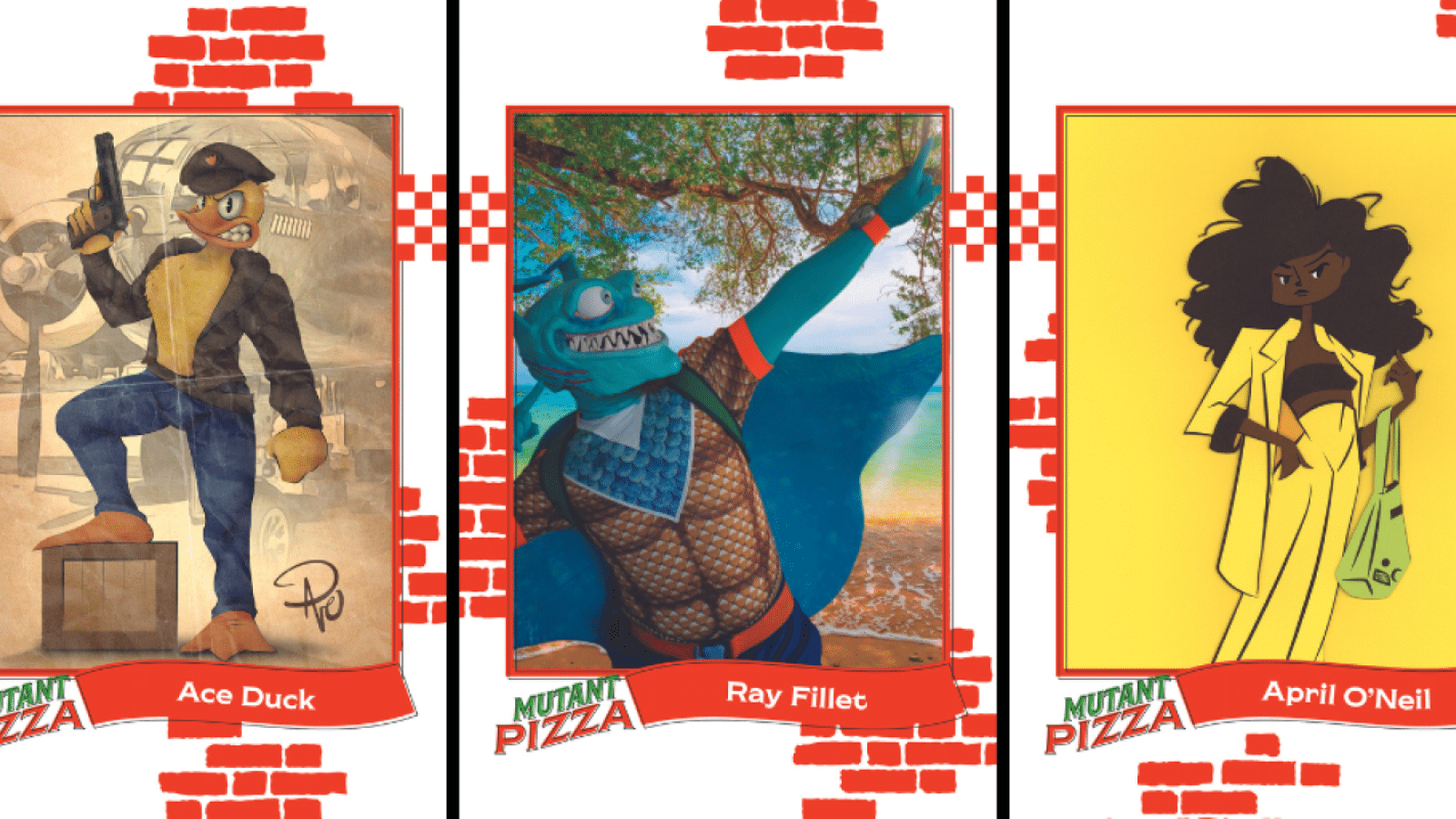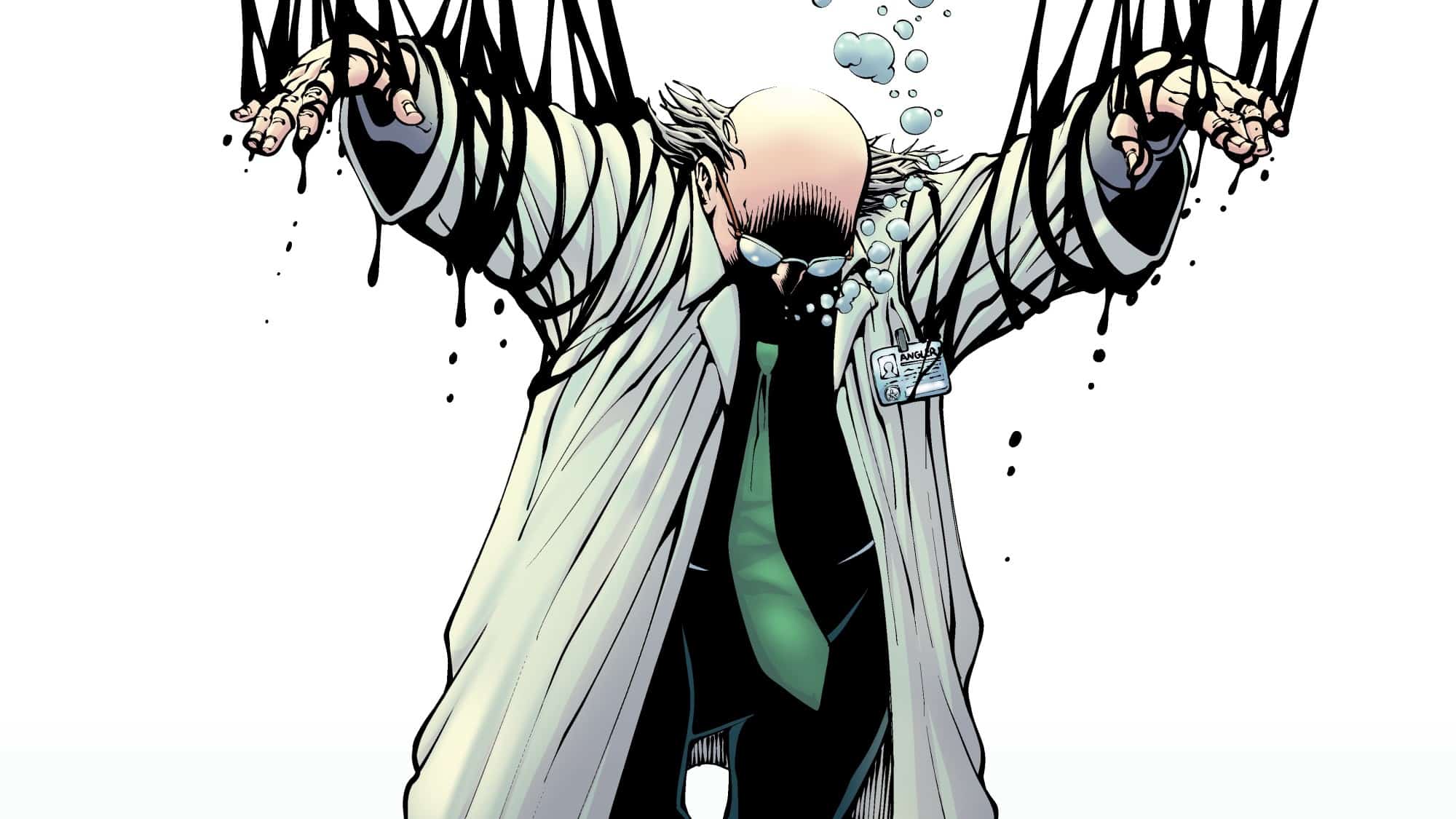Marvel Comics’ What If…?, appropriately enough, was born from a moment of pivotal decision.
After two years as the top editor at the House of Ideas, preceded by the better part of a decade as the right hand man to Stan Lee, Roy Thomas had stepped down from his position at the helm of the company. But as one of Marvel’s top-selling and fan favorite writers, they had every reason to keep him under contract as a writer. But having just vacated the top spot at the company, Thomas had no great desire to leap back into navigating the rocky shoals of shared continuity. So the question was: what was he going to write?
His answer to that question, What If…?, was simple but innovative: a new series of one-and-done stories, each issue of which would explore an alternate fictional history of the Marvel Universe, springing from some key juncture in the lives of its heroes and villains. Over the course of 40 years and 13 volumes, the series explored concepts ranging from the intriguing (“What If the Avengers Had Never been?”), to the thought-provoking (“What if Captain America Had Been Elected President?”), to the comical (“What If Aunt May Had Been Bitten By the Radioactive Spider?”), to the downright bizarre (“What If Dazzler Had Become the Herald of Galactus?”).
This week, Disney+ is set to launch it’s own What If…? animated series, exploring the could-have-been scenarios of the MCU much as its comic counterpart has been doing since Roy Thomas had his happy brainstorm 44 years ago. On the eve of the show’s debut, ComicsXF chatted with the man who created What If…?, to talk about his inspirations, favorite stories, and bringing What If…? to life.
Inspirations and Secret Origins of What If…?

Zach Rabiroff: Alternate history is a genre that has a long and storied past, going back far beyond Marvel Comics, of course. Thinking back to your formative years, before you became a writer, what was the first alternate history or alternate reality story that struck your fancy?
Roy Thomas: I don’t recall when I first encountered the idea, but I do recall that, even before I was struck by the Earth-Two concept in 1961, I had read such books as Not This August [by C.M. Kornbluth], a sci-fi novel (from the Science Fiction Book Club, of which I was a member by the mid-’50’s) in which China and Russia had conquered the U.S. and a guerrilla band of Americans was all that resisted them… interestingly, more or less the concept I gave Arnold Drake one day circa 1967 before he went in to a meeting with Stan, and which swiftly evolved into the Guardians of the Galaxy, with no further input from me. Of course, most SF comics and stories were really of an “alternate reality,” including the “Lost World” series in Planet Comics that helped inspire the War of the Worlds series I launched at Marvel. By ’61 or so I was also reading in the Lupoffs’ fanzine Xero about such Nazis-won-WWII novels as The Sound of His Horn [by John William Wall] and [Philip K. Dick’s] The Man in the High Castle, which fascinated me. Perhaps the first outcome of that at Marvel, so far as I’m concerned, was the Squadron Sinister, followed by the Squadron Supreme.
Rabiroff: What was it that appealed to you about the genre in particular? What do you think it lets writers explore that other types of stories don’t?
Thomas: Very simple. If you don’t have to worry about continuity (the bugaboo of all series writers—every story decision you make can affect every future story decision you can make) you can let yourself go and explore all sorts of different possibilities.
Bringing What If…? To Life at Marvel

Rabiroff: In 1977, you launched the What If…? series at Marvel, and wrote its first two issues, followed by another 15 over the next two decades. What led you to pitch the series at that time? What was the story of its genesis?
Thomas: Having fairly recently left the editor-in-chief job, I wanted to find a way to write salable comics without having to coordinate with other writers or editors, or to handle the mainstream continuity of major characters. To do the latter would’ve been better for my career, perhaps, but after my experience as ed-in-chief, I was a bit burned out on that, and I preferred to work in my own corner of the Marvel Universe, where there wouldn’t/couldn’t be that much pressure for me to coordinate, etc. Hence The Invaders, the first fruits of that impulse… and even the brief “3-D Man”series later… and What If? Just as in Invaders I could handle Captain America, Sub-Mariner, and the original Human Torch, in What If? I could handle Spidey, the F.F., Hulk, whomever… without worrying about continuity. I felt I’d earned that right.
Rabiroff: One of the most distinctive and memorable features of What If? was its use of Uatu the Watcher as a kind of master of ceremonies, guiding the reader Rod Serling-style through the alternate timelines the series explored. What led you to this idea? Which came first, the idea to use the Watcher, or the desire to have some recurring character serving as an M.C. for the series?
Thomas: Yes, I felt a recurring character—as the “Rod Serling” of this particular four-color Twilight Zone—would be a good idea, and I think it was. The Watcher was a natural, because his whole mission was to watch… so he was guiding the reader through this maze of alternate worlds, which I thought (and Stan agreed) would make it more easily intelligible to the younger reader. Stan himself had never liked the alternate-world concept much, but I could get him to go for it in this context, just as I could get him to go for WWII stories if they had Captain America and the gang in them. It was all about doing what I wanted to do, hopefully with decent sales, and keeping Stan my publisher and mentor happy. After all, he had acquiesced in my being a “writer/editor” reportable only to him, not to any other editor at Marvel, so I wanted to keep him happy. And I was still working in a Stan Lee/Jack Kirby framework, I felt.
Rabiroff: What were some of the challenges you faced in answering the central “What if…?” of each issue? Did you find that stories naturally pulled in a certain direction once you had started the alternate-history billiard balls rolling, or was it more of a struggle to make each outcome a distinct universe compared to all the others?
Thomas: Since I didn’t wind up doing that many stories, they came easily. The first issue [What If Spider-Man Had Joined the Fantastic Four?] was a natural, because lots of us readers had wondered what might’ve happened if Spidey had joined the FF early on. In fact, that was by and large my standard for those early issues: what were the stories I’d like to see? Of course, I added a couple that I might want to see more than other people, such as the concepts of “What If the Invaders Had Stayed Together After World War II?” (the one real canonical What If? Issue, as I made clear right from the start), the 1950s pre-Avengers grouping (which I had to ask Don Glut to write, and he added a character or two to it—not sure how I’d have handled it since I never got that far), and Sgt. Fury fighting WWII in outer space (a kind of joke).
Expanding the Marvel Multiverse

Rabiroff: Many What If…? stories (both by yourself and your successors) took as their inspiration some of the hidden corners and forgotten minutia of Marvel continuity. Was it always your intention to use the series as a means to explore those corners, or was it just a happy accident? Is there something about comics continuity you find intriguing as a source for storytelling?
Thomas: Yes, that was always my intention. To paraphrase William Shatner, “I don’t know if you know this about me,” but comics continuity has been important to me since I was a kid. I found it hard to take seriously Superman and Batman stories in which the two would fight evil Martians in two different stories—and they’d be different races of Martians. If comics didn’t take their own stories seriously enough to remember them from one month to the next, why should I as a reader? Naturally, this can be carried too far… but I don’t personally think I usually did carry it too far. Others’ opinions may vary, and they’re welcome to their opinions. I certainly have no use for them.
Rabiroff: There are two phrases that are often associated with the mainline Marvel Universe: “The world outside your window,” and “the illusion of change.” It occurs to me that What If…? was a rare opportunity to violate both of those dicta: it was based on world emphatically not like the familiar one, and change really did happen irrevocably. Did you find this ability to cause permanent change liberating at all? Were there elements of the What If…? ethos you wish you could have incorporated into Marvel continuity at any point?
Thomas: Yes, that was very liberating, and fun. Because not only could I have Spidey join the FF and show what might happen… but, if we’d wanted to (and if the issue sold well, and it did), there was no reason why, a year or two later, I couldn’t have done a story in which Spidey joined the FF and nearly the opposite thing happened. That’s the beauty of alternate worlds. Of course, it can get a bit confusing… like Loki in the recent ambitious Disney+ series… but it’s one way of keeping superheroes from getting boring.
Rabiroff: In contrast to the Earths One, Two, etc. of DC Comics, Marvel tended to use the What If…? series as a way to segment its alternate timelines into one-off stories. Was that a deliberate decision when you came up with the series? Did you (or do you) feel that Marvel worked better for not having a go-to set of alternate universes with different versions of its characters?
Thomas: Basically, yes… and Stan, who was in ultimate charge, felt even more strongly about that. If there are too many alternate realities, I think there’s a danger readers will cease to take any of them seriously. Still, they have wonderful possibilities, as What If…? and Spider-Man: Into the Spider-Verse both demonstrate.
Rabiroff: Having just asked that question, I should say that you did write one of the most memorable What If…? stories to deliberately use previously-established alternate histories: 1992’s “Timequake” epic, which brought about a crisis that involved a whole host of previous What If…? universes for a multi-part adventure. Just recently, we saw that story become a major basis for the plot of Disney+’s Loki series. Had it always been your intention that some of the What If…? realities could become recurring universes to crossover with the Marvel U?
Thomas: That five-issue, unprecedented What If…? series was basically the idea of my good friend and oft-collaborator Jean-Marc Lofficier, who knew corners of the Marvel Universe that I had let be swept under the rug unobserved years before. We saw it as a way both to help What If…? (an ongoing mini-series might goose sales) and to have an ongoing several-month assignment for ourselves. Jean-Marc did most of the plotting, subject to whatever changes I might want to make (which were, I’m sure, minuscule) and of course whatever the titular editor insisted on. Because I wasn’t so involved in the plotting, I don’t recall those particular stories as well as I do many others I’ve written, but I’m sure Jean-Marc does!
[Ed. note: Being, as we are, committed journalists dedicated to seeking the truth wherever it leads us, ComicsXF reached out to Jean-Marc Lofficier to get his take on one of What If…?’s signature stories. Here’s what he told us.]
Jean-Marc Lofficier: One of the core ideas we pitched to Marvel was that we wanted to do a What If…? mini-series that wouldn’t be detached from the 616 reality but would, in fact, impact on the regular Marvel universe. Many people didn’t buy What If…? because they felt the book was somewhat disconnected from the regular Marvel Universe. Our goal was to change that, and to a large extent, we did. We also decided to focus on three alternate realities Roy and I had already created: Roy’s “Fantastic Five” and our joint “Cosmic Avengers” and “X-Vampires”. We used others, of course, but these were the three main ones. I loved Walt [Simonson’s] Time Variance Authority. I thought it was a tremendous concept and I can only hope that Roy and I did it justice in the fifth issue of “Timequake.” Note that our Mobius was obsessed with his TVA poster campaign, which (the propaganda posters) is an aspect we find in the Loki series.
[Ed. note: Thanks, Jean-Marc! We now return to our Roy Thomas interview already in progress.]
Rabiroff: There’s a kind of macabre joke among comic fans that there are really only two types of What If…? answers: “everyone dies,” or “everything turns out basically the same.” That’s obviously a simplification, but it’s true that a great number of What If…? stories seem to skew toward darkness: you yourself wrote stories in which the X-Men died on their first mission, the Vision conquered the earth, or Iron Man died as a result of the Avengers never forming, to name a few. Why do you think so many of these stories turn toward darkness? Was it a conscious decision you made, or did you just find the stories taking you in that direction?
Thomas: Comics were slowly getting darker in those days, between what was left of the underground comix explosion and the tremors that were leading to Dark Knight Returns and Watchmen. It was, perhaps, also a natural outgrowth of the gloominess of many early endings of Amazing Spider-Man and other Marvel comics, which were in such contrast to what DC had been doing. As time goes on, writers have to stretch ever further to hold an audience… or maybe just to please themselves. Of course, editors have to hold them in check, or we’d soon all be committing suicide at what happens to our heroes.
Rabiroff: Final question: any plans to watch the What If…? series on Disney+? Anything you’re hoping to see?
Thomas: Well, I’d love to see them do their own versions (whether or not they adapt what I did as writer or as editor) of stories like Spidey joining the FF… the Invaders post-WWII (not bloody likely)… Conan’s not a possibility, I know… any of the others. Mostly, I just hope they stretch the imagination and entertain the people. That, and making myself happy, was all I was ever about.
Roy Thomas’s Top 5 What If…?’s

Because the two things we love most at ComicsXF are our loyal readers and a good top 5 list, we asked Roy Thomas to tell us his five favorite What If…? Stories from his time at Marvel. Here, in no particular order, are his picks for the best of the could-have-beens:
1. “What If Conan the Barbarian Walked the Earth Today?” (What If…? Vol. 1 #13):
Until recently unprintable thanks to licensing issues, this story by the regular Conan creative team of Thomas and John Buscema follows the titular barbarian after he is hurled through the Well of Time into New York City circa 1977. What follows is one of the most fun (and surprisingly poignant) Conan stories from the era, which doubles as a legitimately funny satire of 1970’s New York life. And who ever said no to a little Buscema barbarian action?
2. “What If The Invaders Had Stayed Together After World War II?” (What If…? Vol. 1 #4):
A unique What If…? story for the simple reason that it’s not a “what if?” at all: it’s an “actually was,” situated firmly in 616 Marvel continuity. The issue is really a response from Roy Thomas to Steve Englehart’s then-recent revelation that the “Commie-Smashing” 1950’s Captain America was a different guy who really had existed in the Marvel Universe. If that were the case, asked Thomas, who was Cap between 1945 and the start of the next decade? This story answers the question by telling the untold tale of Marvel’s postwar superhero generation. Come for the continuity fix: stay for Frank Robbins’ drawing of the Human Torch melting Adolph Hitler’s face.
3.“What If…The Avengers Had Been Formed During the 1950’s?” (What If…? Vol. 1 #9):
Another What If…? issue with a surprisingly long afterlife, this one (written by Don Glutt off a premise by Thomas, and pencilled by Alan Kupperberg) imagines a team of proto-Avengers formed in the Eisenhower decade consisting of a number of long-lost Atlas-era heroes (plus one Roy Thomas original): Gorilla-Man Ken Hale, the goddess Venus, the Human Robot, Marvel Boy, and 3-D Man. Modern Marvel readers will recognize this lineup as almost the basis for the Agents of Atlas — and, indeed, this issue was the direct inspiration for creator Jeff Parker’s later hit.
4.“What If the Spider Had Been Bitten By a Radioactive Human?” (What If…? Vol. 1 #8):
Most What If…? tend to aim for high drama, but every so often the series decided to loosen its belt and let the freedom from Marvel continuity allow for some full-on comedy. That was certainly the case in one of the goofiest and most purely joyful instalments of the original series, an 8-page romp by cartoonist Scott Shaw (best known for his work on The Flintstones and Captain Carrot and the Amazing Zoo Crew), which imagines Peter Parker’s arachnid counterpart undergoing a reverse origin, and fighting crime as The Amazing Man-Spider. The unusual experiment in funny animals comics may have been atypical for Marvel, but it turned out to be ahead of its time — as any fan of The Spectacular Spider-Ham could likely tell you.
5. “What If the Fantastic Four Were the Original Marvel Bullpen?” (What If…? Vol. 1 #11):
And speaking of comedy, this product of Jack Kirby’s mid-’70’s return to Marvel had an unusual genesis. Conceived originally by Thomas to be drawn by Kirby (who, it should be noted, had not always displayed the warmest attitude toward the former Marvel editor), Thomas handed over the writing reins after Kirby took it upon himself to remove Thomas as the story’s Human Torch in favor of longtime Bullpenner Sol Brodsky. But despite the deliberate snub, Thomas, for his part, holds no ill-will over the results: “I was furious about that for just a little while, but quickly realized that Jack’s choice was superior to mine in that case… since Sol had been around (albeit as a freelancer) at the time of Fantastic Four #1, had designed the original FF logo, and had even inked issues #3 and 4.” And if Kirby’s attempts at MAD-style humor could be a little less than elegant, Thomas feels the the story’s virtues nevertheless win out: “The story itself was only so-so, despite a couple of (I thought) brilliantly funny panels, but the concept and the idea of Jack drawing the FF for what became one last time in comics overcomes my resistance.”
ComicsXF would like to extend a special thanks to Roy Thomas and Jean-Marc Lofficier for taking part in these interviews, as well as Roy Thomas’s manager John Cimino for his assistance in making this article possible.







